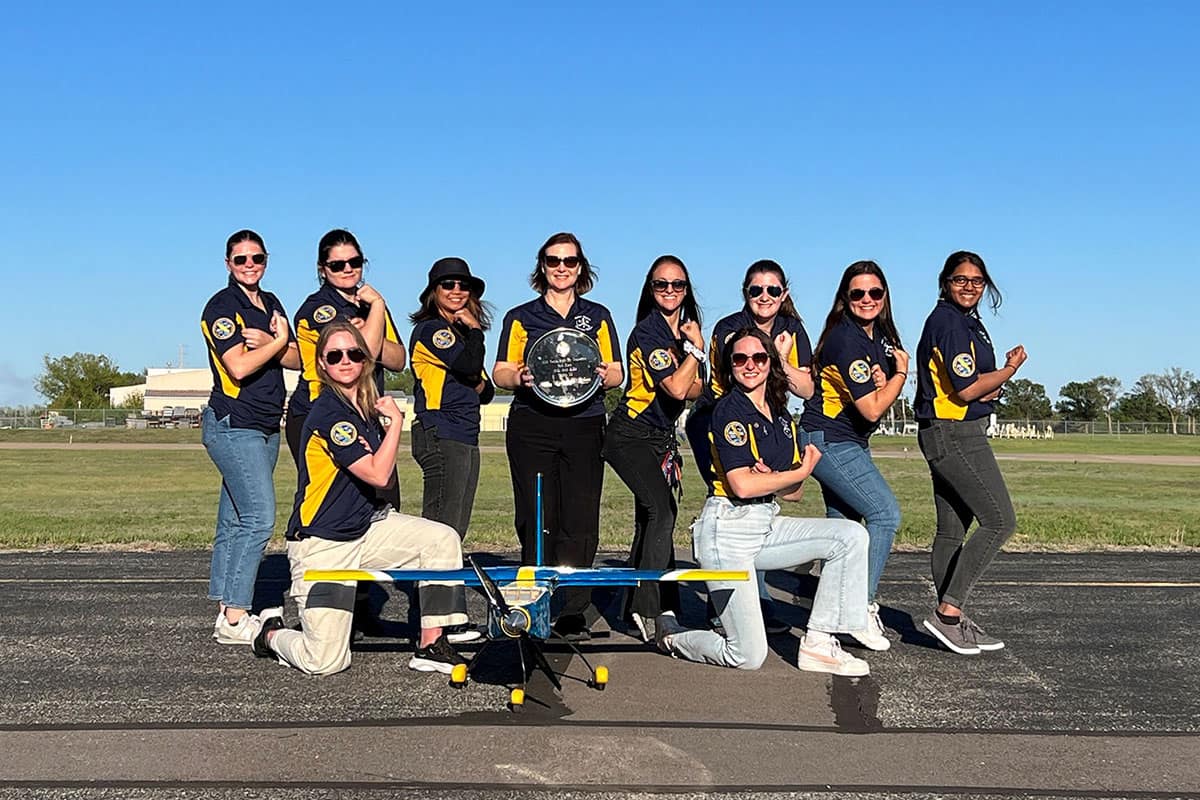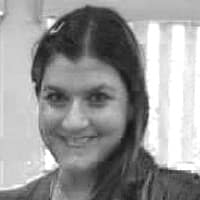Eagles Win No. 1 Overall at AIAA’s Uncrewed Flight Competition



For the first time, students from Embry-Riddle Aeronautical University’s Daytona Beach, Florida, campus took top honors at the AIAA Design/Build/Fly (DBF) Competition, held earlier this month in Wichita, Kansas. A second Embry-Riddle squad, this one from the Prescott, Arizona, campus, allso placed among the top teams, earning eighth overall.
"Embry-Riddle students who participate in the AIAA Design/Build/Fly Competition are impressive in their dedication, innovation and leadership,” said Dr. Jim Gregory, dean of the College of Engineering at the Daytona Beach Campus. “They are learning critical skills that will serve them well throughout their careers! Their first-place win is outstanding evidence of their excellence."
The challenge required students to design, build and test a remotely operated, radio-controlled airplane for urban air mobility. The aircraft had to conduct a delivery flight, a medical transport flight and an urban taxi flight, plus a ground mission that demonstrated how quickly the aircraft configuration could be changed from delivery to medical transport to urban air taxi.
“I am immensely proud of our Prescott team's outstanding performance — this achievement is a testament to their hard work, innovative thinking and the rigorous engineering education provided at Embry-Riddle,” said Dr. Dietmar Rempfer, dean of the College of Engineering at the Prescott Campus and professor of Aerospace Engineering and Mathematics. “Their success not only reflects their technical skills but also their ability to collaborate and adapt under pressure.”
Hosted by Textron Aviation, this year’s event, which included more than 1,000 students representing 93 universities from all over the world, was the largest in its 28-year history.
Making History
The Daytona Beach team dominated the competition with its aircraft, christened “W.R.E.N.C.H.,” standing for Wind Resistant Emergency Navigator for Civilians and Healthcare.
“The team has worked tirelessly to design, build and test the best aircraft possible, oftentimes pushing themselves to their limits,” said Andrew Bunn, a senior Aerospace Engineering student who served as the project lead. “This victory represents the culmination of 10 years of DBF activities at the Daytona Beach Campus and was made possible through our culture of continuous improvement and dedication to learning above all else.”
A Bangor, Pennsylvania, native, Bunn said that the team’s primary focus throughout the project was to provide industry-like engineering experience to all students involved. Personally, he leaned on that experience during a co-op with Gulfstream Aerospace in Georgia late last year. Many of his teammates have landed full-time jobs, as well, he added — like Ashley Brown, an Aerospace Engineering student from Highland, New York, who served as the team’s propulsion lead. Brown will go to work at Piper Aircraft in Vero Beach, Florida, after graduation this May.
“The experience you gain from working with DBF is unlike anything you will learn in class,” said Brown, who added that the team had more female members this year than ever before. “We push ourselves harder every day, pull long hours, work together and all support each other.”
Students have spent the past two semesters focusing on this project, according to distinguished professor of Aerospace Engineering Dr. J. Gordon Leishman, the team’s faculty advisor.
“The team has been ranked in the top three positions for the past three years, so this first-place win also crowns off an unprecedented string of previous DBF successes,” he said. “Winning this year is a testament to the DBF team's continued dedication, creativity, technical proficiency and exceptional teamwork, and it sets the gold standard for excellence in aerospace engineering education.”
Kimberly Heinzer, an associate professor of Aerospace Engineering who also helps advise the team, agreed.
“Their dedication, driven by a genuine thirst for learning, fostered a family-like dynamic of continuous improvement and mutual support,” she said.
Zachary Herman, the team’s chief engineer, said one of the reasons why he thinks the team was so successful is that it tried to make sure everyone’s ideas were considered.
“No single person can design a winning aircraft,” said Herman, a Hudson, Wisconsin, native who will go to work for the Northrop Grumman Corporation after graduating. “The team has always tried its hardest to make DBF a safe place to fail, learn and have fun.”
The winning Eagles team also won $3,000 for its victory.

A second Embry-Riddle team, this one from the Prescott, Arizona, campus, also placed among the top competitors at the event, earning eighth in this year’s flight challenge, which required students to design, build and test a remotely operated radio control airplane. (Photo: Embry‑Riddle/ Karl Loechelt)
Top Ten
The Prescott team excelled at the competition with their aircraft called PABLO, which stands for Public Airborne Biomedical Lifting Operations.
“As an entirely undergraduate club comprised of primarily freshmen and sophomore students, we are overjoyed to bring home a top-10 win,” said Matthew Marandola, an Aerospace Engineering student who served as the team’s project manager.
The team adopted a new report-writing technique that boosted its score and promoted more thorough documentation habits, he added. The creation of new team positions, such as a test evaluation lead and chief report writer, also provided a clearer delegation of responsibilities, allowing the club to operate more efficiently. A San Juan Capistrano, California, native who will graduate with his bachelor’s in December, Marandola said the team gives students invaluable experience.
“We had about 10 freshmen last year gain internships in their first summer by referring to their experiences at Design/Build/Fly,” said Marandola. “A third of the interns chosen by Boeing on our campus came directly from Design/Build/Fly.”
Marandola was a manufacturing engineering intern at The Boeing Company last summer, and his next internship will be in stability and control at Boeing. The Prescott team’s faculty mentor is Johann Dorfling, the Raisbeck Engineering Design/Build/Test endowed distinguished chair and assistant professor of Aerospace Engineering.
“Behind the aircraft lies the unparalleled dedication of every student member,” said Marandola. “The club has given each of us invaluable hands-on experience in the field we love.”

 Melanie Stawicki Azam
Melanie Stawicki Azam